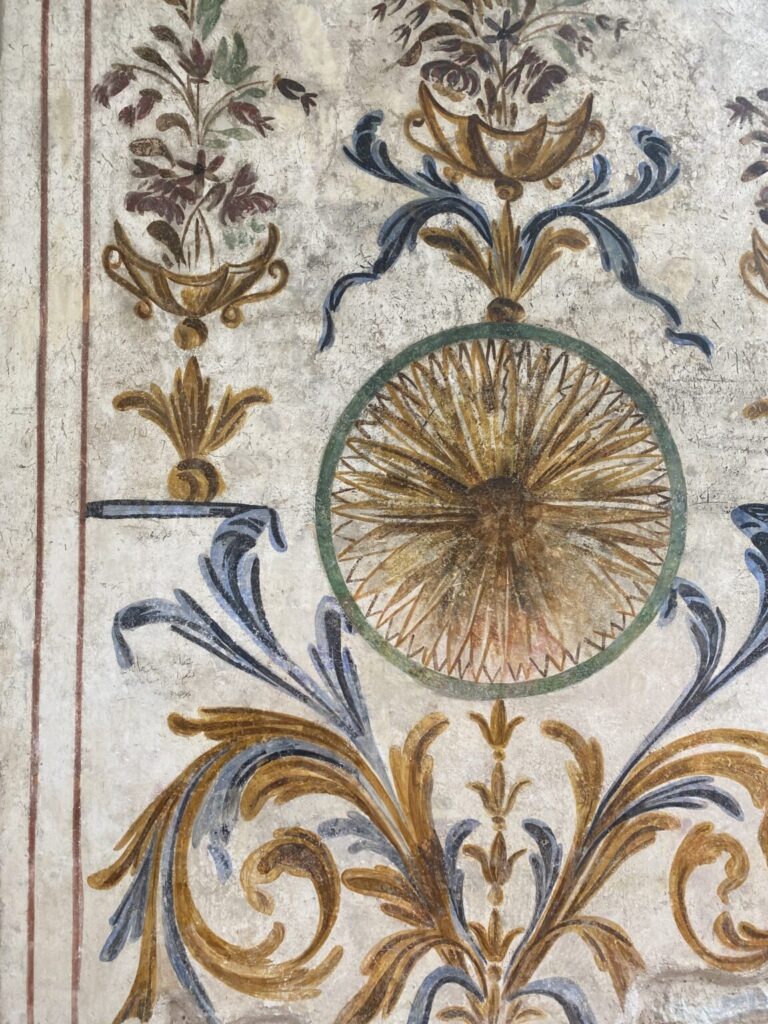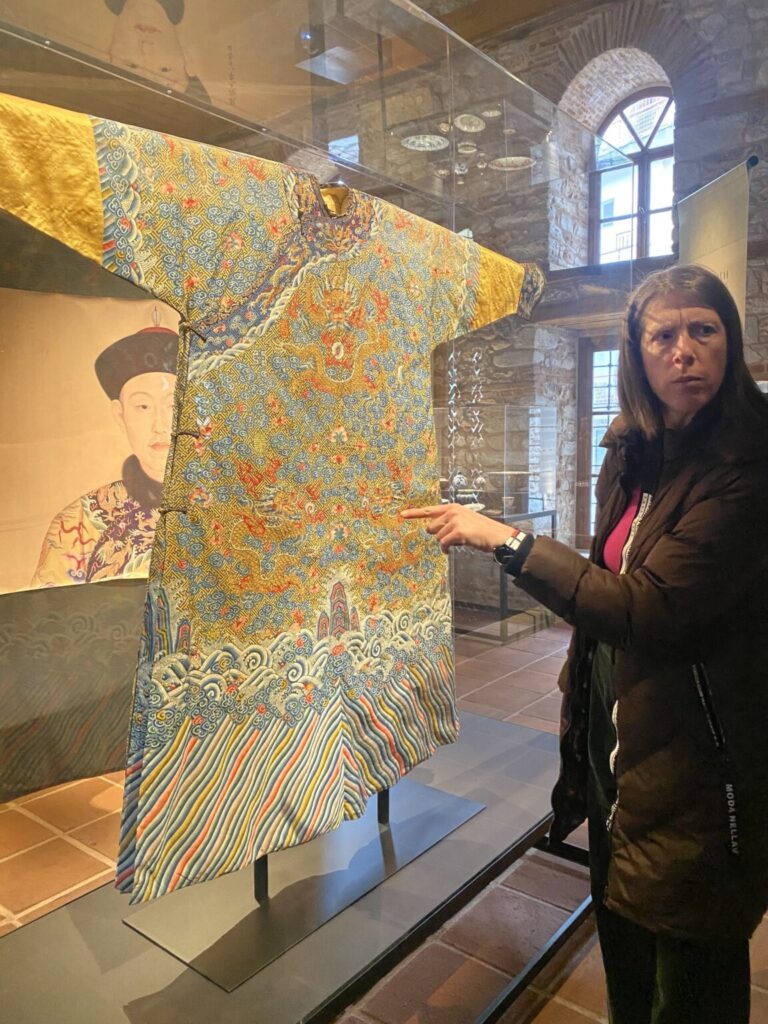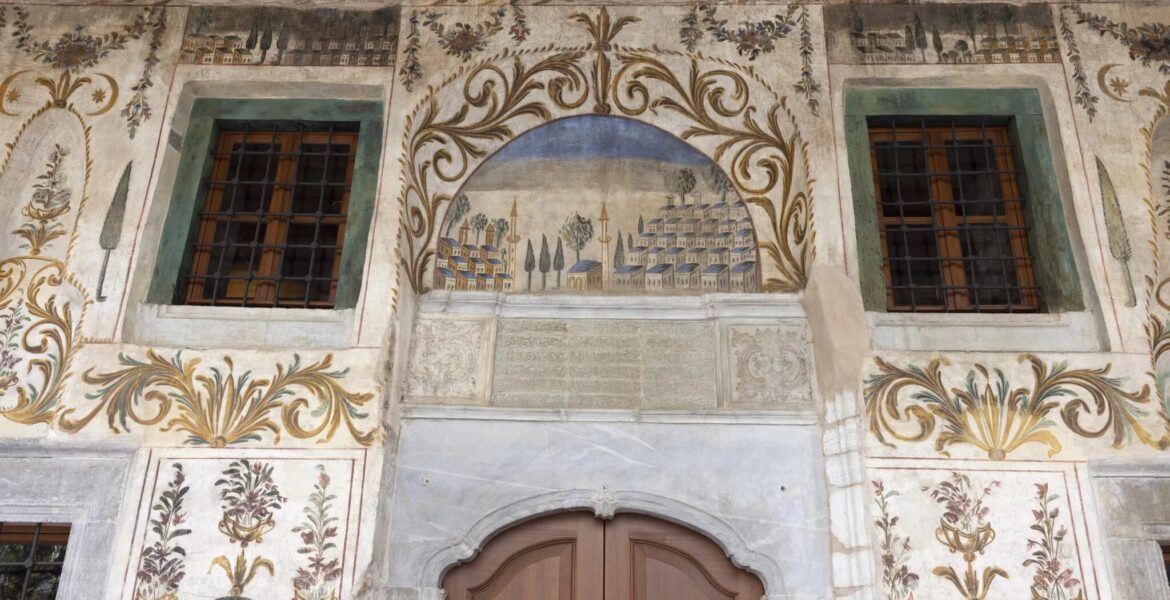Why this beacon of beauty, knowledge and inspiration is worth a visit this season.
A mosque that travels through time, and from a place of prayer it becomes a refugee shelter, turns into a printing house, and squeezes between heartless apartment buildings until finally, it transforms into a lighthouse. In the middle of the city, a beacon of beauty, knowledge and inspiration.
Welcome to Sandirvan Mosque of Drama.
The story of Sandirvan Mosque is a story against time and oblivion. Against abandonment and oblivion. It is a story of constant work, methodical inspiration and creation.
The story begins in the second half of the 15th century when another mosque with its minaret was built in the Muslim neighbourhood of the city. According to the founding inscription at the mosque's entrance, Mehmet Ali Aga renovated it in 1806, hoping that his philanthropy would help him live long.
The Sandirvan Mosque, part of a larger complex with dormitories, a cemetery and a fountain, from which it took its name, was within an enclosed courtyard and functioned as a place of worship until 1920. The population exchange drove the Muslims away from Drama, and the waves of refugees coming from the East were urgently looking for shelter.

Thus, six refugee families find shelter in the Mosque.
In 1927, another refugee, Michael Vezirtzoglou, housed his newspaper in this building. By 1981, inks, typewriters, printers and lots of paper would dominate the space. "Tharros", the most important and longest-running newspaper in Eastern Macedonia, was published in this building for 54 years.
Two years later, it was declared a preserved monument but abandoned to its fate. The roof's destruction hastened its collapse, and the rampant vegetation of a fig tree systematises the destruction of the minaret.

Raycap takes action
Until 2012, the company Raycap, which deals in producing high-tech products of Draminos Kostas Apostolidis, decided to save it to turn it into a landmark of the city and a beautiful place of culture.
The new life

For three years, an inspired and tireless team led by the architect Corallia Papaioannou did a titanic restoration project with respect for the past and the aim of giving it new life. In addition to restoring the monument itself, Raycap expropriated two beautiful apartment buildings, one of which had a partition wall built over the windows on the east side of the memorial.
The mosque breathed and, at the same time, acquired a beautiful garden, getting even closer to its original form. Also, Raycap, wanting to respect and highlight the newer history of the monument, digitised the archive of the "Tharros" newspaper with free access for everyone on the website: tharrosdrama.gr.
The monument
The monument's welcome to visitors with the beautiful paintings on its front is unforgettable. High-art folk paintings depicting stylised states with minarets. In all probability, one of them depicts the city of Drama itself with its three neighbourhoods: Greek, Jewish and Muslim.
Delicate floral patterns, stunning colours and inspiring balance characterise the entire look. Inside, the Mihrab niche, which indicates the direction of prayer towards Mecca, fortunately, saved its impressive colours while the pulpit and the wooden vestibule were also restored.
Imperial China at Sandirvan Mosque

After the restoration was completed, Raycap opened the monument to the public and entered into a strategic partnership with the Benaki Museum. From its rich collection, the Museum undertook to create periodical exhibitions specifically for the Sandirvan Mosque.
During this period and until March 31, 2024, a rare exhibition about imperial China tells dozens of shocking stories and introduces visitors to a fascinating but largely unknown universe.
When were all the books of poetry, history and philosophy burned in China, and how is the event connected to the building of the Great Wall? What is the clay army good for? Why were pan-Chinese exams organised? Did mandarins read a lot? Can a ship's ballast be full of relics? How is a Greek merchant of London connected to the railways in central China? What were the emperor's clothes like anyway?

Dozens of questions are answered in an exemplary exhibition from a museological point of view. An excellent guided tour and an informative video complete the rare experience. A monument and its actions now make Drama an absolute destination.
Dimitris Stathopoulos is a columnist for Travel.
READ MORE: From Samarina to Florina – A mountainous weekend in Western Macedonia.


